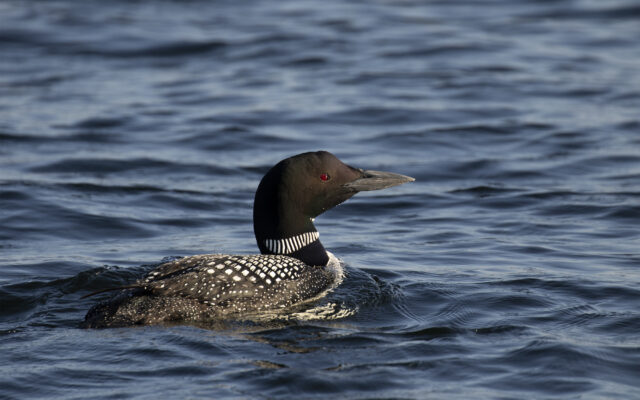
You can help with Maine’s annual loon census
By Pete Warner, Bangor Daily News Staff
The haunting wail of a common loon echoing across a lake or pond is among the most cherished of all outdoor experiences for Mainers and vacationers alike.
Again this summer, Maine Audubon will continue its efforts to help make sure loons remain a key element of the state’s wildlife offerings when it conducts the 40th annual Loon Count.
Every July, Maine Audubon sets aside a single Saturday morning on which to take a significant sample of the state’s loon population. The Loon Count, which is scheduled for July 15, will bring together hundreds of observers on numerous lakes and ponds.
Maine Audubon solicits the help of a growing volunteer force across the state to conduct the sampling of loons in the hope of learning more about their numbers, habitat and behavior. Observers will hit the water in canoes, kayaks and other watercraft, while others will watch and listen from shore, from 7 a.m. to 7:30 a.m. on July 15.
It’s no small effort as in 2022 more than 1,600 volunteers teamed up to look for loons on 361 Maine lakes. That represented the most extensive study to date.
“The loon count is this incredible moment in time where everyone across Maine who’s involved is doing the same thing at the same time,” said Hannah Young, Maine Audubon’s Loon Count coordinator. “It’s a really wonderful way for people to show how much they value their lakes and their loons, and we would love to keep that going.”
Information gathered during the count helps provide an estimate of Maine’s loon population and helps identify other trends. The data also provide insight about the health of the state’s lakes and ponds while determining specific places where nesting loons may be in need of help and ways to lower the impact of humans on their well-being.
According to Maine Audubon, Maine boasts the most loons in the eastern U.S., which magnifies the need to understand how the birds’ breeding success here might impact the overall population.
Key threats to loons include being hit by a boat, which is a leading cause of adult loon deaths in the state, along with lead poisoning from ingesting lost or discarded lead fishing tackle. Loon Count participants also are charged with identifying nests that have been flooded, and their eggs washed out, as the result of boat wakes.
Maine’s adult loon population has approximately doubled in southern Maine since the start of the Loon Count in 1983, with more than 3,000 estimated to be living in the state last year. The state’s ban on lead tackle has helped significantly reduce loon deaths from poisoning.
Maine Audubon will gladly accept help from anyone else who wants to help with the Loon Count next month.
“We have folks who have been counting for 40 years, and we have people who are just joining and have never done any kind of community science project,” Young said. “Every single type of person who gets involved is incredibly helpful to this statewide initiative, and we hope to get more and more people involved.”
For more information about the Loon Count, or to volunteer, contact conserve@maineaudubon.org or visit maineaudubon.org/loons.